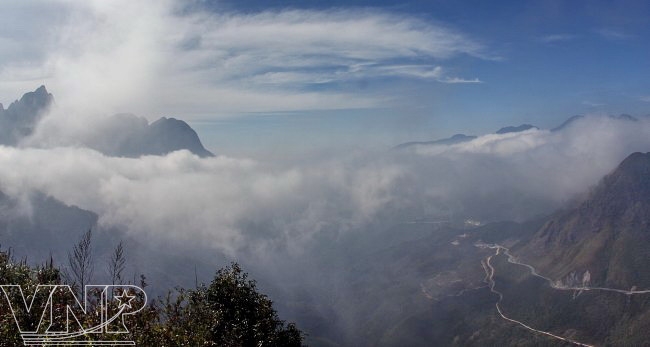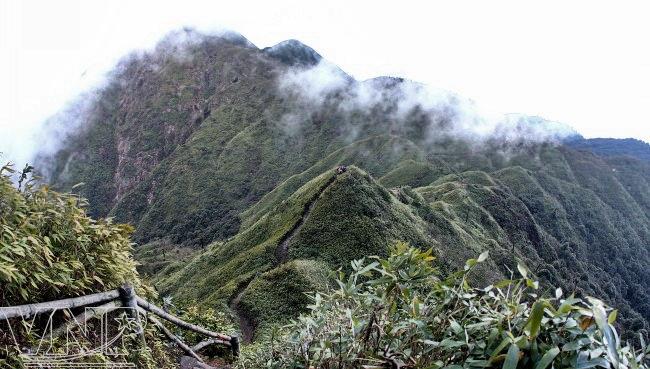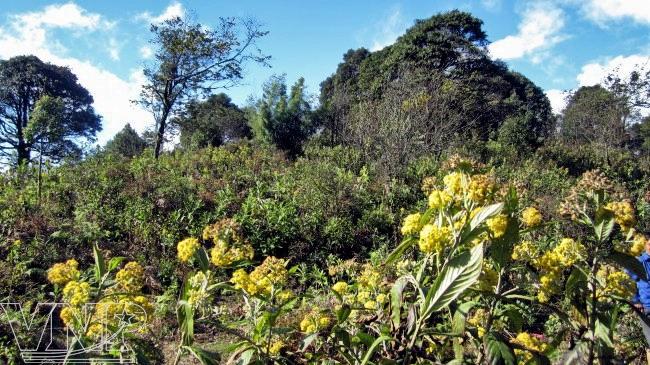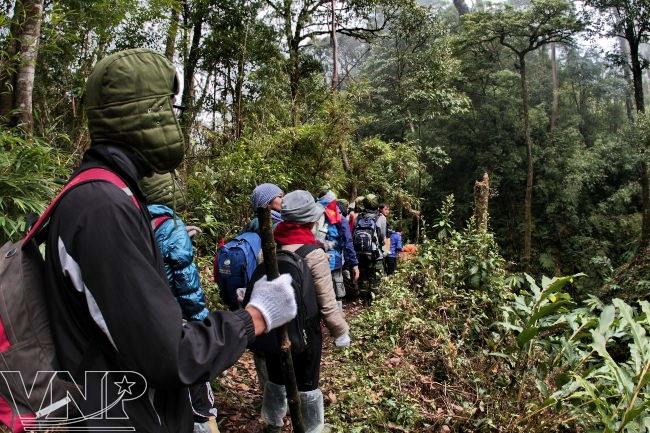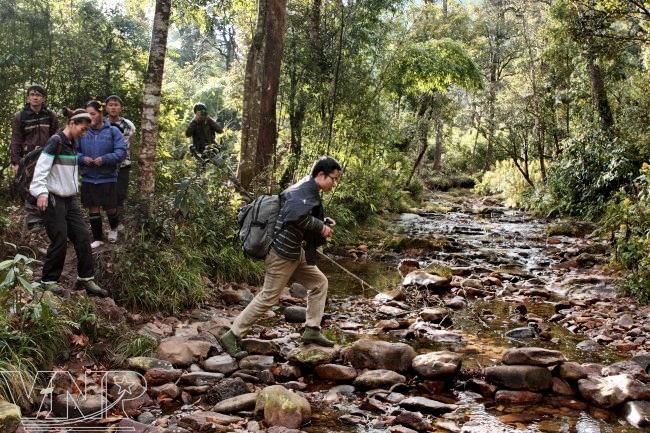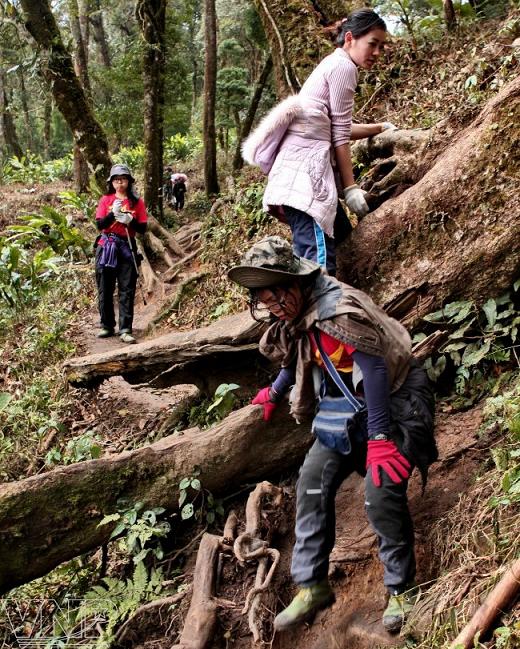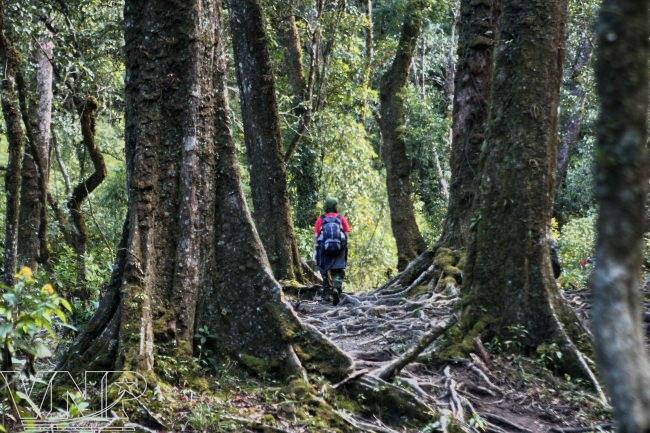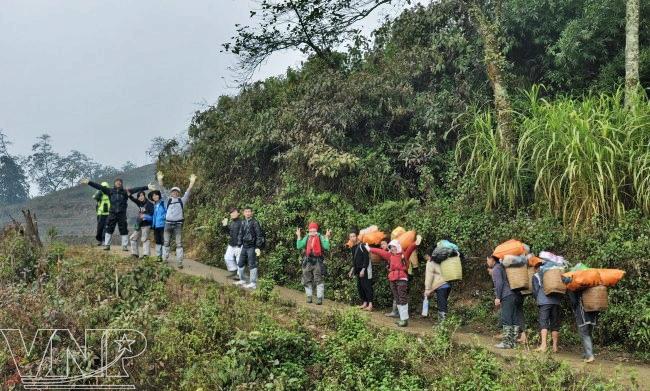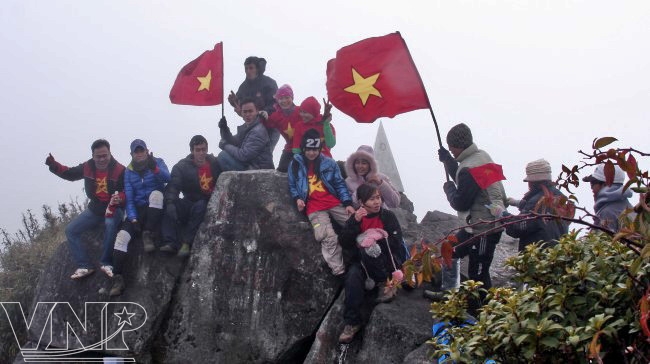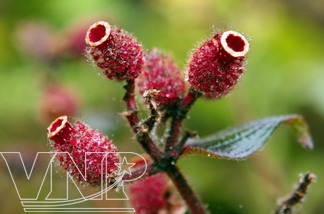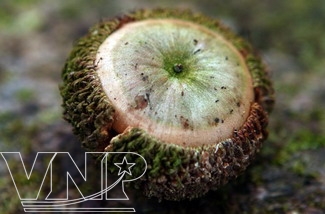Hoang Lien National Park
- V
According to the opinions of experts and those who have visited Hoang Lien National Park, the area boasts three of "the best in Vietnam", including the highest mountain peak, the most grandiose pass and the biggest treasure of the forest`s resources.
Hoang Lien National Park boats Fansipan's peak and Hoang Lien Pass which have an elevation of 3,143m and 1,600m respectively. There are many rare and precious animals and plants listed in the Red Book of Vietnam and the World.
Lured by the above claims, we followed Hoang Tung, a local photographer, to discover Hoang Lien National Park. Our first destination was Fansipan, the highest peak of the Hoang Lien Mountain Range. With an elevation of 3,143m, it is dubbed “de nhat Nam son” or the roof of three Indochina countries.
We began our journey at Tram Ton Pass that has an elevation of 1,900m, and climbed to the altitude of 2,900m where we could see the houses of the Mong, Dao and Giay ethnic groups scattered among the mountains. Here is a forest of hedge bamboo and ancient pine trees with green leaves.
Despite harsh weather with winds whistling through the mountains all year round, these varieties of plants still grow well on the rocky mountain.
When the mantle of darkness settled on the mountains, our Mong guides prepared dinner and sleeping bags for us so we could rest before trying to conquer the highest peak on the following day.
Sinh, one of the guides, regretted not having us climb Fansipan in March, because then we could have seen the charming beauty of water-rail plants in bloom.
In the following early morning, we felt eager to climb to Fansipan’s peak.
The path up was quite dangerous because the higher we climbed the narrower and steeper the path became. The thick mist made the path slippery so we had to walk carefully.
“We have arrived!” someone happily shouted. A metal plate inscribed with the words “FANSIPAN 3,142m” appeared in front us and made all of us happy to have reached our goal. Surrounding us was an ocean of mist, hiding the view. We took out our Vietnamese flag and cameras to record the memorable moment.
Although the mist reduced the usefulness of the cameras, none of us cared because the feeling of joy at what we had accomplished was memory enough.
After conquering Fansipan, we continued our trip using motorbikes to discover the pass that is a thread across the Hoang Lien Mountain Range that connects Lao Cai and Lai Chau. During the trip, we all were frozen to the marrow despite wearing warm clothes.
We arrived at Cong Troi (heaven’s gate), the peak of the pass with an elevation of 1,600m. Here, the climate of the two sides of the peak was different.
It was rather warm on the side of Tam Duong in Lai Chau Province but it was very cold and misty all day on the side of Sa Pa in Lao Cai Province.
The mountains and forests were covered by a thick, misty curtain. Although the pass is only 30km, there are innumerable deadly turns.
It is very dangerous when driving through the pass with one side having steep cliffs and the other deep chasms.
From a distance, we only saw green forests and white clouds, creating a charming painting.
One of the other interesting things during our trip was that we were able to photograph strange varieties of plants in Hoang Lien National Park.
Pham Van Dang, Director of Hoang Lien National Park, said that according to scientists, Hoang Lien National Part is a bio-diversified centre with many special-use varieties listed in the World’s Red Book needing to be protected and preserved.
Furthermore, the national park has also many mysterious ancient plants, including some special-use varieties that have not been researched. For this reason, Hoang Lien National Park is also recognized as the ASEAN Heritage Garden.
Covering a total area of over 60,000ha and located at an elevation of 1,000-3,000m, Hoang Lien National Park is considered a green lung in the northwestern area. Since 2003, after the decision on the establishment of the national park, domestic and foreign scientists in Vietnam were assigned to coordinate and research the bio-diversity.
According to statistics, Hoang Lien National Park is an area with over 2,000 varieties of high-class plants, thousands of species of vertebrate animals, insects and reptiles, accounting for 50% of the total species of the flora and fauna in Vietnam.
There are many precious and rare plants and animals listed on the Red Book, namely Bach xanh (Calocedrus rupetris), Thiet sam (Tsuga chinensis (Franch) Prit. Ex Diel), Thong tre (Podocarpus), Thong do (Taxus wallichiana Zucc) and Dinh tung (Cephalotaxaceae) and rare species of birds like Dai bang dom to (Aquila clanga), Tri mao do ( Phasianus colchicus), and Vuon den (Hylobates concolor).
The trip to discover Hoang Lien National Part left a long lasting impression on us. It is an area of great potential with a wild and magnificent beauty rarely seen in other places.
|
White clouds cover the Hoang Lien Mountain Range. A part of Hoang Lien National Park seen from an elevation of 2,900m. Hoang Lien National Park is considered a green lung of the northwestern area. Tourists visit Hoang Lien National Park. Crossing a small dry stream in Hoang Lien forest. Tourists go through a forest at the altitude of 2,900m. A primitive forest with trees hundreds of years old. Tourists on a trip to conquer Fansipan's peak. At Fansipan's peak. Hoang Lien National Park has extremely diversified flora with over 2,000 species. |

